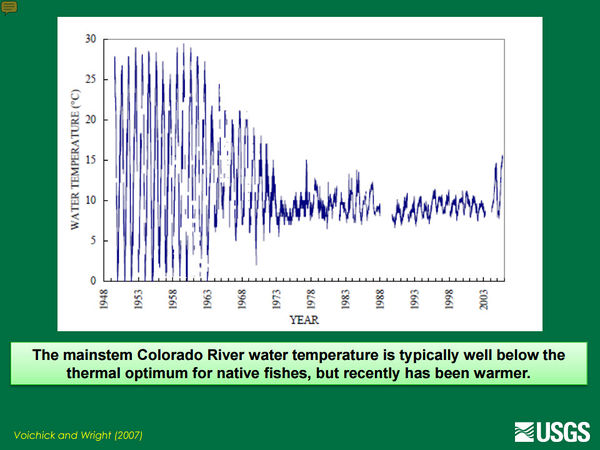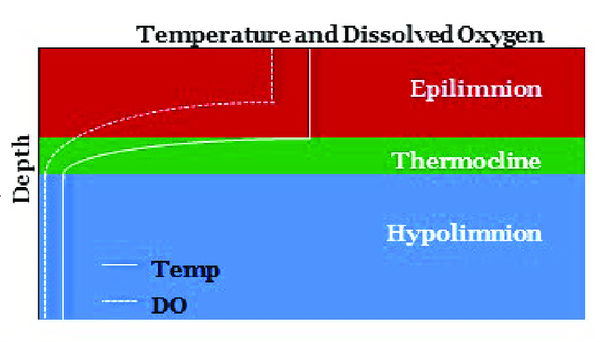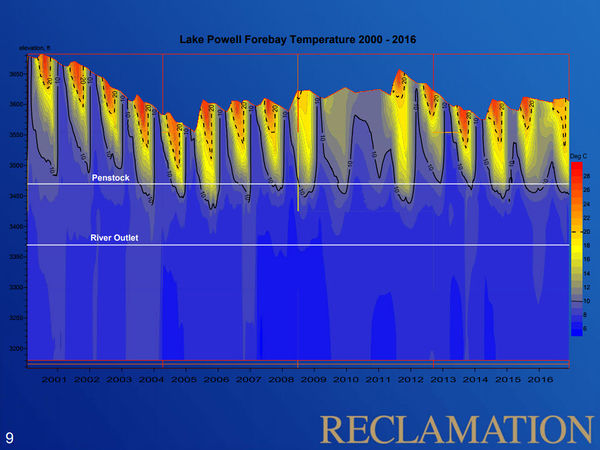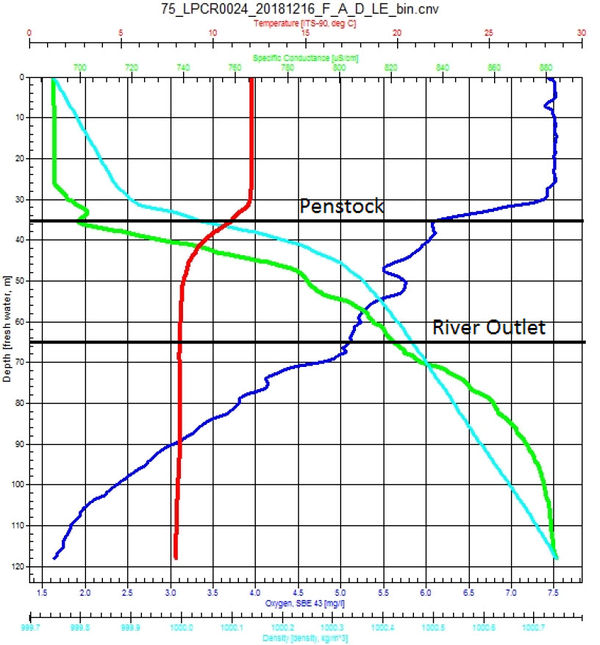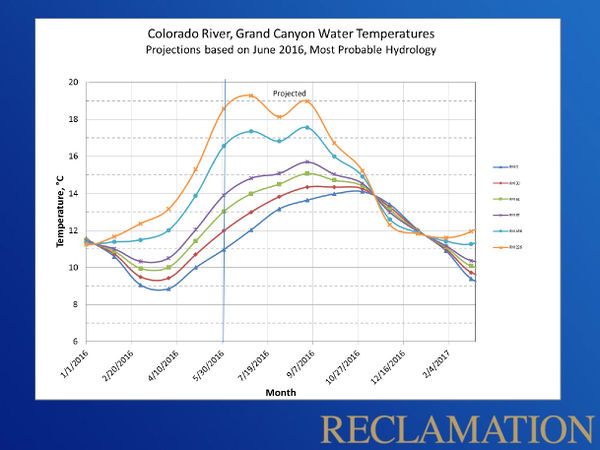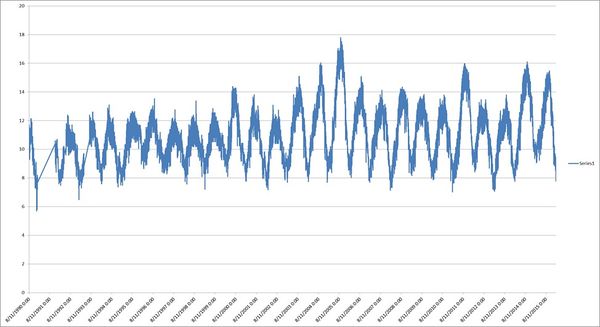Difference between revisions of "TEMPERATURE"
Cellsworth (Talk | contribs) |
Cellsworth (Talk | contribs) |
||
| Line 104: | Line 104: | ||
|style="color:#000;"| | |style="color:#000;"| | ||
| + | *[https://www.gcmrc.gov/discharge_qw_sediment/station/GCDAMP/09379901 Glen Canyon Dam near Page, AZ] | ||
*[http://www.gcmrc.gov/discharge_qw_sediment/station/GCDAMP/09380000 Colorado River at Lees Ferry] | *[http://www.gcmrc.gov/discharge_qw_sediment/station/GCDAMP/09380000 Colorado River at Lees Ferry] | ||
*[http://www.gcmrc.gov/discharge_qw_sediment/station/GCDAMP/09383050 Colorado River at 30 mile] | *[http://www.gcmrc.gov/discharge_qw_sediment/station/GCDAMP/09383050 Colorado River at 30 mile] | ||
Revision as of 16:16, 21 February 2020
|
|
Water Temperature below Glen Canyon DamPrior to completion of Glen Canyon Dam in 1963, the temperature of water flowing through the Grand Canyon each year was highly variable, ranging from the icy, spring run-off to the warm, 85-degree summer-heated flows. However, once the dam was constructed, the temperature of the water released from the dam - drawn from the depths of Lake Powell and released through the dam's penstock intakes - ranged for many years between 45 and 50 F (7 to 10 C). With the lowering of Lake Powell, release temperatures have been increased to as high as 59 F (15 C) which has likely led to an increase in the humpback chub and other native fish populations in Grand Canyon. These increases in temperature, however, also increase the risk of expanding the distribution and abundance of cool/warm-water nonnative fish like brown trout, green sunfish, smallmouth bass, and walleye which could have a devastating impact on the humpback chub population in Grand Canyon like they have on humpback chub and other native fish populations in the Upper Basin. |
| --- |
--- |
--- |
|---|
